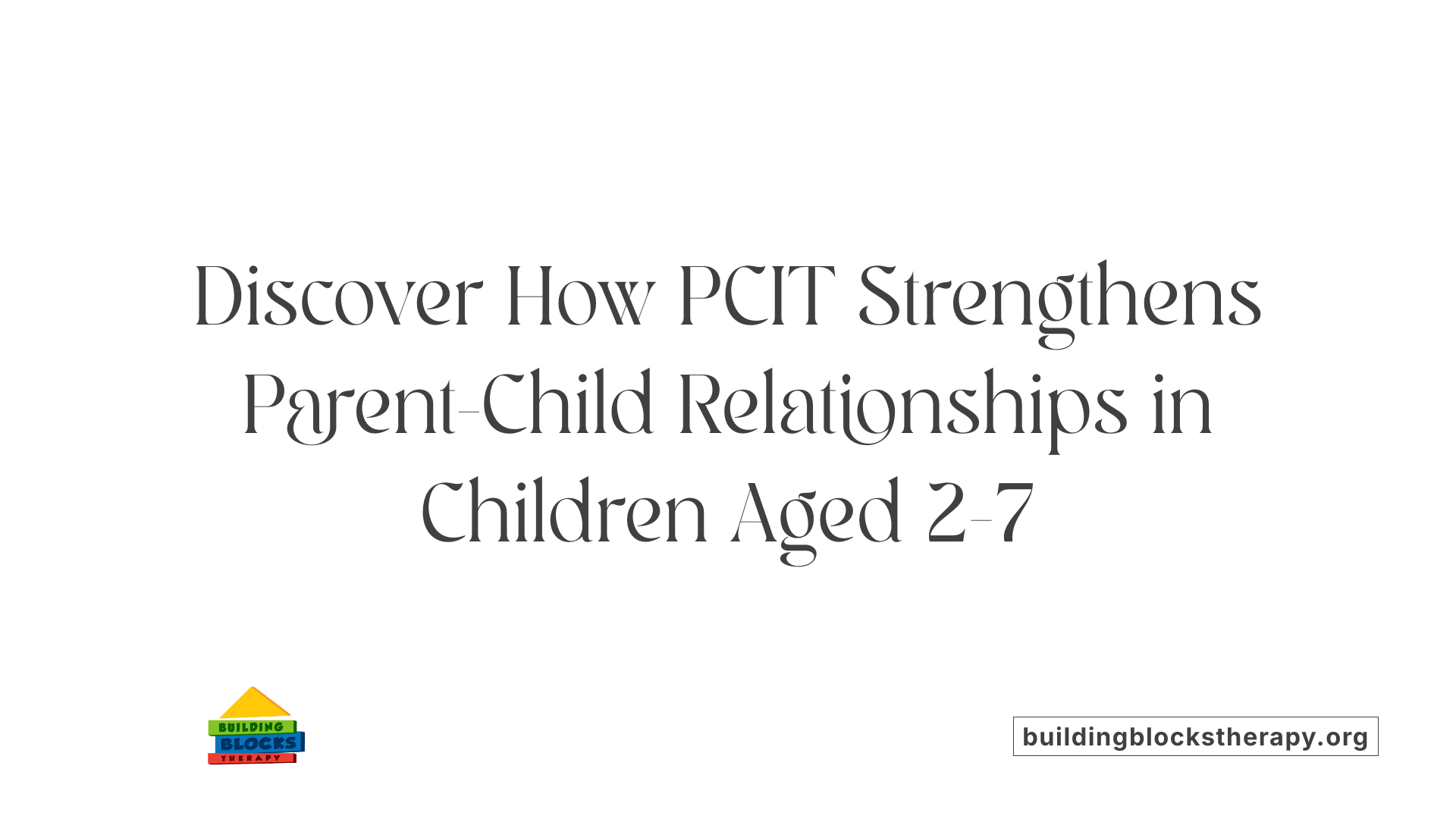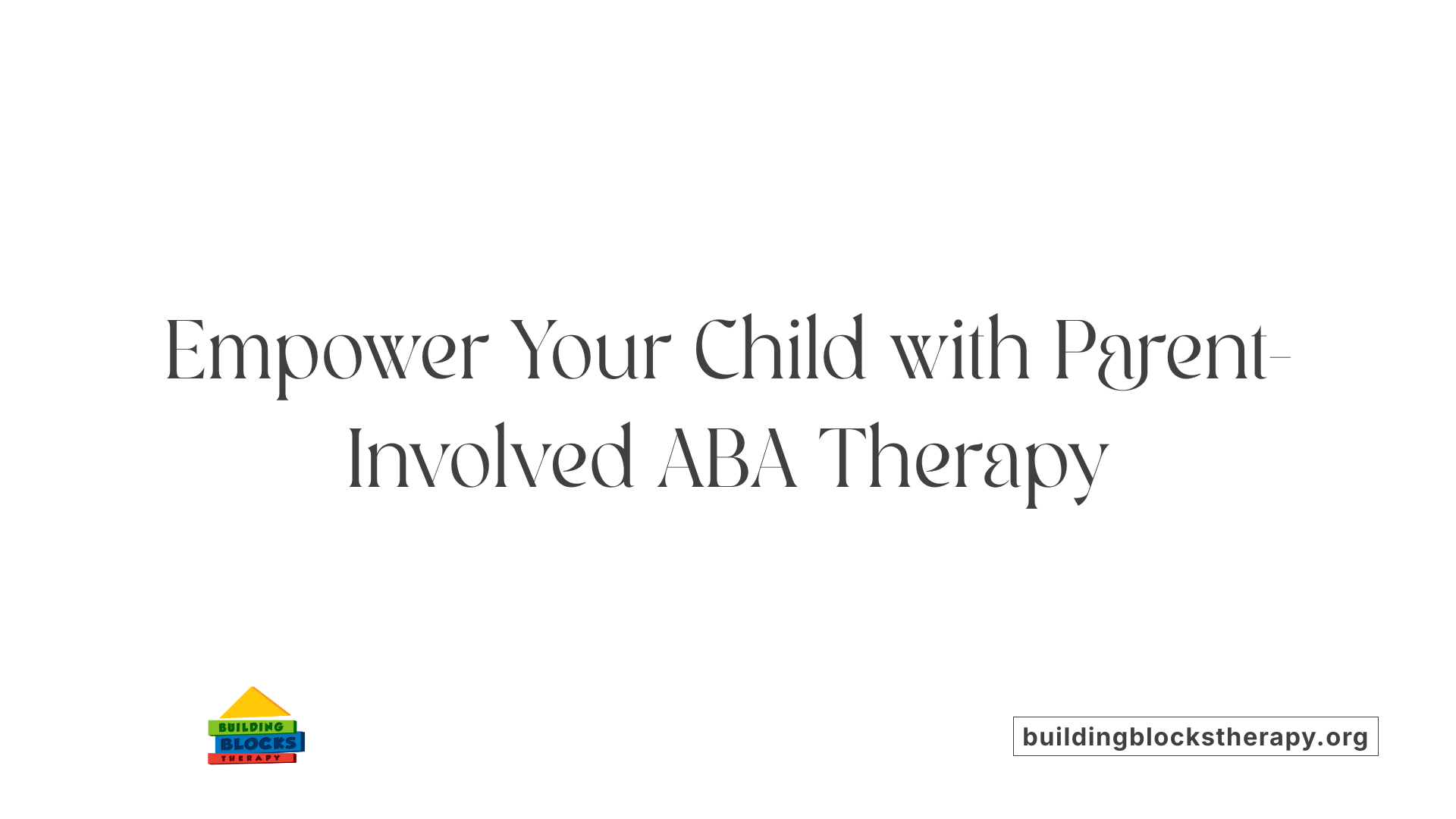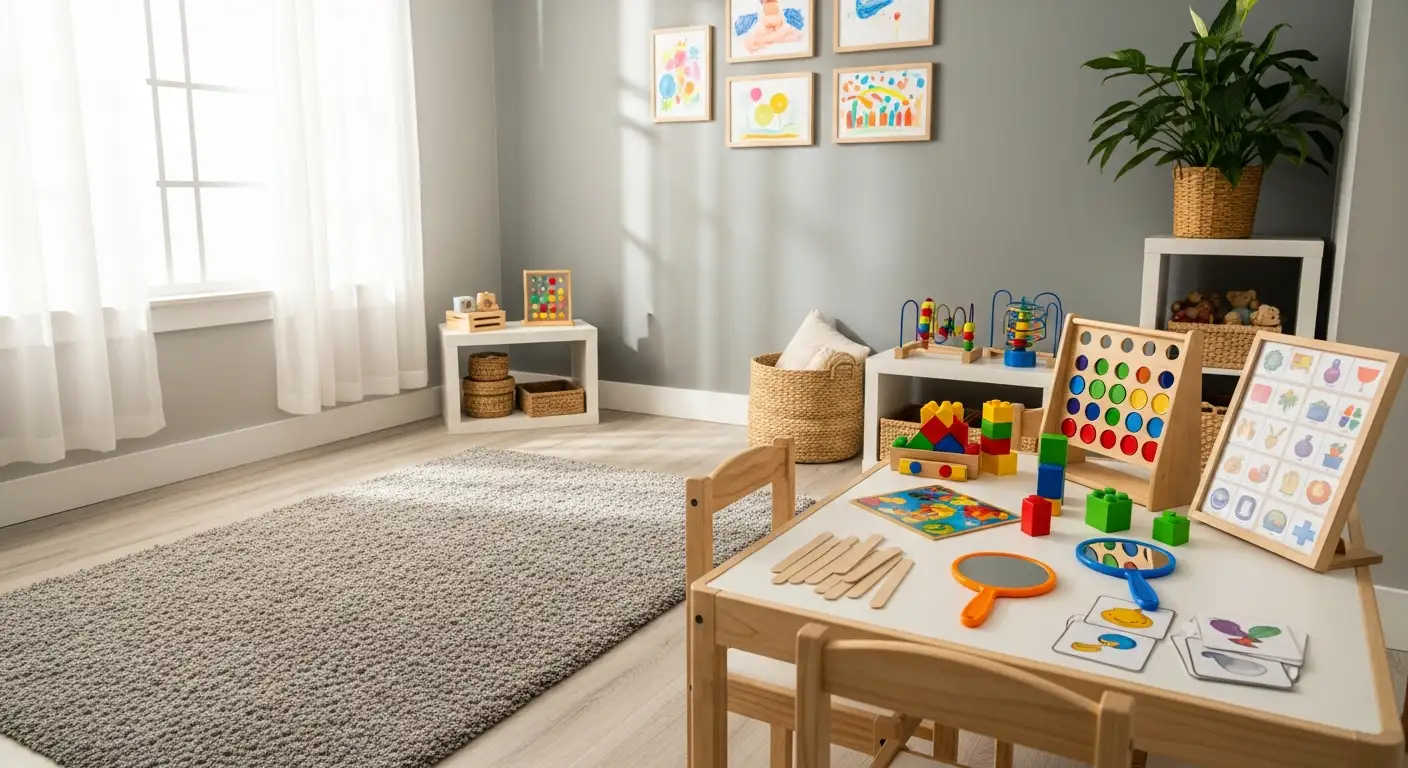Understanding the Importance of Parent-Child Dynamics in Therapy
Parent-child interaction plays a pivotal role in the success of therapy programs designed for children with behavioral challenges and autism spectrum disorder (ASD). Among various therapeutic approaches, Applied Behavior Analysis (ABA) and Parent-Child Interaction Therapy (PCIT) stand out for their emphasis on strengthening bonds while addressing behavioral needs. This article explores how parent involvement and interaction enrich therapeutic progress, the mechanisms behind these therapies, and challenges families may face on this journey.
The Foundations and Impact of Parent-Child Interaction Therapy (PCIT)

What is the Purpose and Age Range of PCIT?
PCIT is designed to support children aged 2 to 7 and their parents or caregivers. Its main goal is to enhance interactions, social skills, and strengthen the parent-child connection, creating a healthier and more positive family dynamic.
What Are the Components of PCIT?
PCIT consists of two distinct parts:
- Child-Directed Interaction (CDI): Focuses on building the bond between parent and child by encouraging parents to follow their child’s lead and provide positive attention.
- Parent-Directed Interaction (PDI): Trains parents to give clear instructions and deliver consistent consequences to guide and improve their child’s behavior.
How Does Real-Time Parental Coaching Work?
A therapist provides live coaching to parents through an earpiece during sessions. This immediate feedback helps parents develop new skills on the spot, improving their interactions and responses to the child’s behavior.
What Evidence Supports PCIT’s Effectiveness?
PCIT is backed by over 150 studies showing reduction in aggression, non-compliance, and disruptive behaviors. These findings confirm that PCIT effectively improves child behavior and the parent-child relationship.
How Long Does PCIT Last and How Is It Delivered?
The therapy typically spans about 16 weeks with weekly sessions. Duration may vary based on how quickly families master skills and see behavioral improvements. PCIT is available both in-person and via Telehealth, provided by trained clinicians who maintain professional standards.
How Does PCIT Focus on Bonding and Behavior Improvement?
Beyond simply reducing disruptive behaviors, PCIT works to heal and enhance the emotional attachment between parent and child. This dual focus promotes lasting positive changes in both behavior and relational quality.
Applied Behavior Analysis (ABA) Therapy: The Role of Parents in a Research-Based Approach

What is Applied Behavior Analysis (ABA) therapy?
Applied Behavior Analysis (ABA) therapy is a scientifically grounded method focused on modifying behavior by understanding learning principles. It aims to increase adaptive behaviors like communication and social skills while reducing problematic behaviors often seen in children with autism spectrum disorder (ASD). Treatment plans use frameworks such as the ABC (Antecedent-Behavior-Consequence) model and emphasize data-driven tracking and continuous assessment to achieve personalized progress.
How ABA uses positive reinforcement
ABA therapy relies heavily on positive reinforcement to encourage desired behaviors. This reinforcement can take many forms, including praise, stickers, treats, or extra playtime. By rewarding successful completion of tasks or appropriate social behaviors, children are motivated to repeat these actions, thereby building skills gradually and effectively.
Parent involvement in ABA therapy
Parents are the cornerstone of ABA therapy's success. Spending the most time with their children, they support therapy objectives by maintaining routines and consistent strategies at home. This continuous reinforcement helps generalize learned behaviors beyond therapy sessions. Parents also provide valuable insights about their child's behaviors and sensory needs, ensuring that interventions remain effective and tailored.
Benefits of parent training and collaboration
Training equips parents to recognize sensory triggers and apply ABA techniques at home. Collaboration between parents and therapists—such as Board Certified Behavior Analysts (BCBAs) and Registered Behavior Technicians (RBTs)—ensures comprehensive treatment plans. This teamwork creates a supportive environment that fosters the child's overall development.
Practical support for parents at home
A supportive home environment includes structured routines and visual aids like charts or schedules that help children understand their tasks. Such tools reduce anxiety and make daily activities predictable. Additionally, parents can stay in regular communication with therapists to monitor progress and adapt plans as needed.
Professional roles in ABA therapy
ABA services are delivered by professionals such as BCBAs, who design and oversee interventions, and RBTs, who implement them. Clinics specializing in ABA therapy, like Hope AMC in Dubai, employ certified therapists who ensure adherence to evidence-based protocols. Their expertise combined with active parent participation maximizes therapy effectiveness and fosters meaningful behavioral and developmental improvements.
How ABA Therapy Supports Children with Autism through Parental Engagement

How does ABA therapy help individuals with autism?
ABA therapy aids children with autism by focusing on teaching essential skills such as communication, social interactions, and self-care. It uses evidence-based techniques, breaking down complex tasks into manageable steps and employing positive reinforcements like praise, stickers, or treats to encourage progress.
Personalized skill development
Each child’s therapy plan is tailored by trained behavior analysts to address their unique needs. Parents play a crucial role in implementing these plans at home, ensuring consistency and helping children generalize skills across environments.
Reduction in problematic behaviors
ABA helps decrease challenging behaviors by reinforcing desirable actions and applying strategies to manage sensory processing difficulties. This dual approach encourages positive behavior while minimizing disruptions.
Communication and social skill improvement
With a structured framework, ABA promotes enhancements in communication and social interactions. Parents support these gains through active involvement, enabling children to practice new skills in everyday settings.
Parental role in daily routines and positive reinforcement
Parents maintain daily routines and utilize positive reinforcement methods, creating a supportive and predictable environment. Visual aids, charts, and consistent strategies reduce anxiety and promote understanding.
Gradual progress and required commitment
ABA therapy demands time and patience, as progress unfolds gradually. Ongoing collaboration between therapists and parents ensures adjustments to the program and sustains motivation for lasting developmental improvements.
Parent-Mediated Interventions Beyond ABA and PCIT: Enhancing Development in Toddlers at Risk for ASD
What Do Randomized Trials Say About Parent-Mediated Interventions?
Randomized crossover trials have been pivotal in assessing the effectiveness of parent-mediated interventions for toddlers at risk of autism spectrum disorder (ASD). One notable 12-week study adapted methods from proven models like the Early Start Denver Model and Social Communication Emotion Regulation Transaction Support. This design allowed researchers to examine the intervention's impact thoroughly and systematically.
How Do These Interventions Improve Motor and Social Skills?
The intervention demonstrated clear improvements in toddlers' motor skills, showing strong statistical significance (p=0.005; Effect Size=0.60). While the enhancement of social adaptive behaviors was noted as a positive trend (p=0.053; Effect Size=0.45), the results suggest promising progress in social areas crucial for early childhood development.
Are There Trends in Parent-Child Engagement During Therapy?
Parent-child engagement showed a meaningful increase during the intervention period (p=0.010; Effect Size=0.77). Although this improvement did not significantly differ from the waitlist control group (p=0.221), the findings indicate that parent involvement and interaction quality may rise alongside the therapeutic process.
What Are the Potential Benefits of These Interventions for Toddlers at Risk of ASD?
These parent-mediated approaches offer multiple advantages, including enhanced motor abilities, improved social skills, and stronger parent-child relationships. By actively involving parents, these programs facilitate more naturalistic learning environments and promote attachment, which are essential for overall development in children at risk of ASD.
How Do These Interventions Integrate With Established Therapy Models?
The interventions build upon comprehensive, evidence-based strategies like the Early Start Denver Model, integrating behavioral, social communication, and emotional regulation components. This model-driven approach ensures that therapies are not only holistic but also grounded in scientifically supported techniques proven to support early developmental milestones.
Challenges and Opportunities for Families Engaging in Parent-Involved Therapies

What issues or challenges might families face when seeking ABA therapy?
Families often grapple with several obstacles when pursuing ABA therapy for their children. First, finding qualified and accessible therapy providers can be difficult, as specialized clinicians trained in evidence-based approaches like ABA are not always widely available in all regions.
Scheduling therapy sessions that fit family routines also presents a challenge. Consistent attendance is vital, yet busy family lives and competing commitments may disrupt regular participation.
Financial concerns add another layer of difficulty, with therapy costs sometimes creating burdens, especially when insurance support is limited. This can limit the frequency and duration of therapies received.
Caregiver burnout is a common issue, given the intensive involvement required for parent-mediated therapies. Managing stress and fatigue is essential for sustaining engagement and support for the child.
Ensuring that the child's newly acquired skills generalize beyond therapy sessions into home, school, and social environments requires ongoing coordination. Families and therapists must work collaboratively, maintaining regular communication and shared goals to achieve comprehensive progress.
Despite these hurdles, opportunities arise from structured parent training and support that empower caregivers. When families receive professional guidance—such as real-time coaching during sessions—and access to resources, they can reinforce progress effectively at home. This collaboration improves outcomes for both children and their families, sustaining motivation and enhancing the parent-child relationship.
The Critical Role of Parents in Therapy Success
Therapies like ABA and PCIT underscore that parent-child interaction is not just a supportive element but a cornerstone of successful treatment for children with autism and behavioral challenges. Through direct involvement, training, and collaborative partnerships with therapists, parents become empowered agents of change, fostering stronger bonds and facilitating lasting behavioral improvements. Despite challenges, embracing parent-mediated approaches enriches therapy outcomes and nurtures healthier family dynamics essential for children’s growth and development.
References
- Parent-Child Interaction (PCIT) Therapist for (Ages 2-7)
- Parent-mediated intervention tends to improve parent-child ...
- Importance of Parents Involvement in ABA Therapy for Autism
- The Power Of Parent Involvement And Training In ABA ...
- Applied Behavior Analysis (ABA)
- Applied Behavior Analysis (ABA)
- Applied Behavior Analysis (ABA)
- The effectiveness of applied behavior analysis program ...
- 6 Benefits of ABA Therapy for Children with Autism
- ABA Therapy Challenges: Understanding and Overcoming ...






